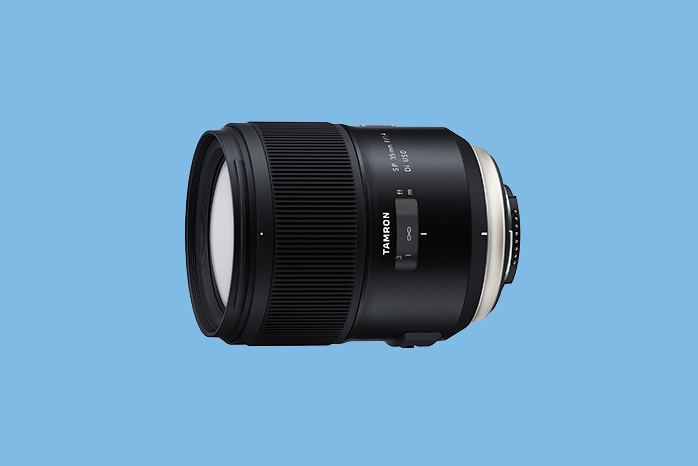
Tamron’s latest high-end prime lens builds on 40 years of the Superior Performance (SP) series, and the company says the 35mm offers “unprecedented quality.” Announced on Thursday, June 6, the Tamron SP 35mm f/1.4 Di USD (Model F045) is a high-end wide-angle prime that will be available in Canon and Nikon full-frame DSLR mounts before the end of the summer.
The lens uses 14 elements in 10 groups — that’s a lot of glass for a wide-angle prime lens, but Tamron says the design combats chromatic aberration while creating sharp images. The company says the lens offers sharpness even toward the edges. The lens construction also uses anti-reflection coatings along with a newly developed coating to fight flare and ghosting.
That construction is paired with a bright f/1.4 aperture, which should help even the wide angle lens produce bokeh easily. Tamron says the construction also helps create excellent image quality in the out-of-focus areas of the photograph.
Along with the optics, the new Tamron 35mm uses the company’s USD or Ultrasonic Silent Drive motor for autofocus. The company says the autofocus performance is fast, precise, and quiet.
On the exterior, the lens is sealed against rain and moisture. The front of the lens uses a Fluorine Coating to help repel moisture, dirt, and fingerprints. A locking lens hood is included.
The SP series first launched in 1979 as the brand’s line for high-end optics. “To commemorate the 40th Anniversary of Tamron’s renowned SP series lenses that are designed and constructed to deliver the highest levels of performance, we drew upon our accumulated expertise and technologies to create the ‘ultimate lens’ — the Model F045,” a Tamron spokesperson said. “Our goal was to achieve high resolution, fidelity of point light source, and beautiful bokeh. We deployed existing skills, like our highly regarded knowhow for producing bokeh, and combined them with new innovations like BBAR-G2 (Broad-Band Anti-Reflection Generation 2) Coating for anti-reflection performance. Today, we announce with sincere pride that the Model F045 embodies Tamron’s philosophy for manufacturing and is the finest lens in Tamron’s history.”
Tamron announced the development of the lens in February. The new lens will be available in the Nikon mount on June 26 and for Canon on July 25, with a retail price of $899.




